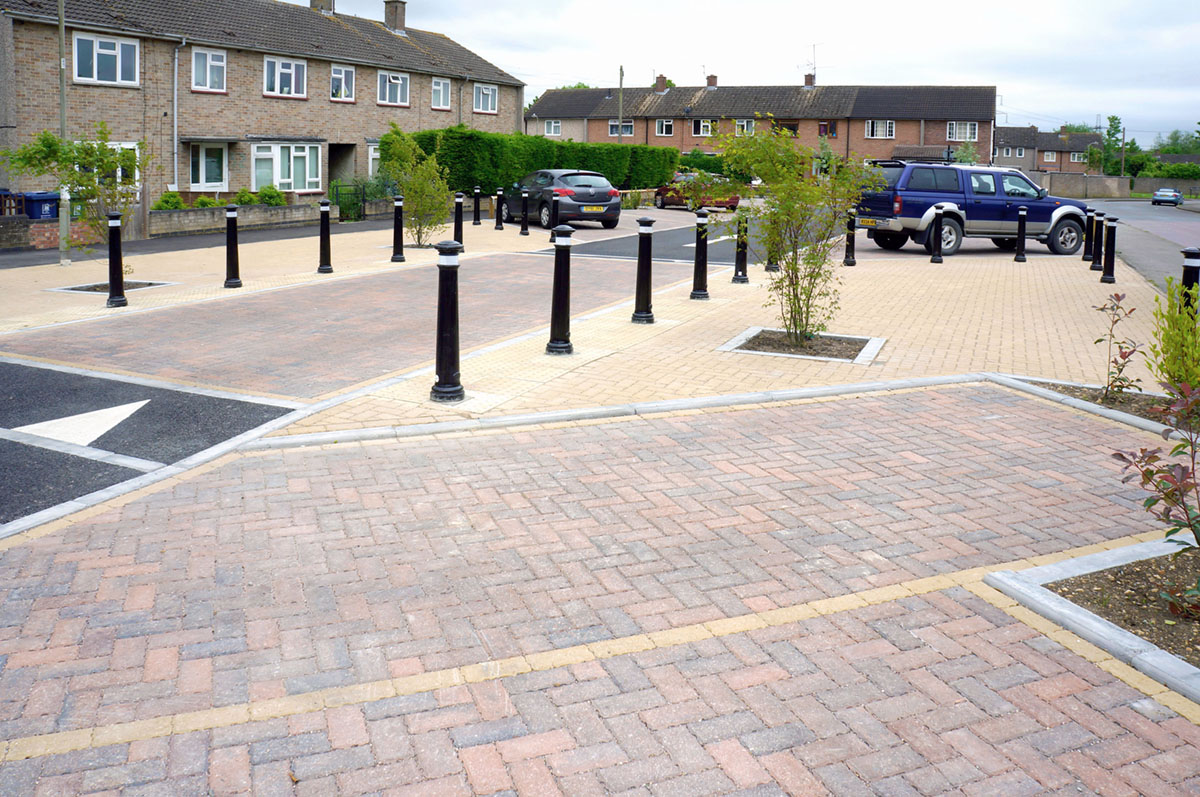Modern Methods of Paving
Modular concrete paving meets today’s Modern Methods of Construction ethos for engineered and prefabricated products, and the increasing use of efficient, fully mechanised site processes enhances the benefits.
Concrete block paving – which has been used for decades on projects ranging from the most demanding heavy-duty applications to the purely decorative – is uniquely placed to satisfy both practical and aesthetic demands. With distinct, modular units and designed variations in colour, texture and shape, block paving gives visual interest and a human scale not possible with formless materials.
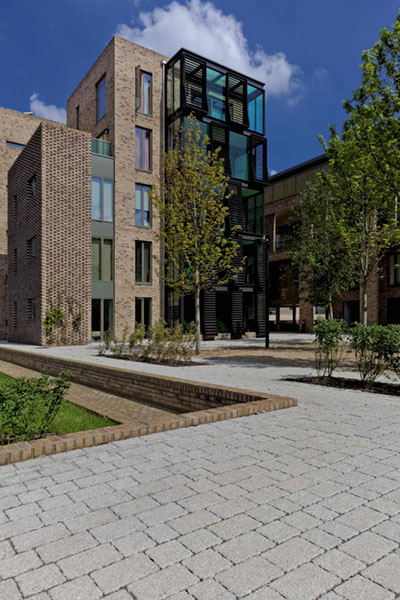
Permeable Paving for Climate Change
The technology’s potential is expanded further with concrete block permeable paving (CBPP), a uniquely flexible SuDS (sustainable drainage systems) technique. It provides an inherent drainage system that requires no additional land-take for water storage, treatment or conveyance, and offers the same visual richness as conventional block paving. It also addresses both flooding and pollution issues by storing and cleaning water runoff at source. This technology eliminates pipework, gulleys and manholes, and should therefore cost less than conventional drainage and paving.
Helping to address climate change, street tree planting and retention of existing trees in developments – with provision for long-term maintenance – are now embedded in planning policy. CBPP offers an important opportunity to help satisfy these requirements simply. Unlike conventional impermeable hard landscape materials, CBPP allows the same pattern of run-off transfer to the ground as natural vegetation, enabling water to reach tree and shrub roots, despite providing an attractive hard surface above.
In addition to irrigation directly from rain, with CBPP there is scope for water storage and rainwater capture away from trees and their umbrella canopies, for gradual conveyance laterally to trees – essential during the summer. CBPP also enables air to reach roots and poisonous CO2 to escape. The favourable environment created for tree roots avoids pavement surface disruption and facilitates natural growth into lower levels for stability and longevity.
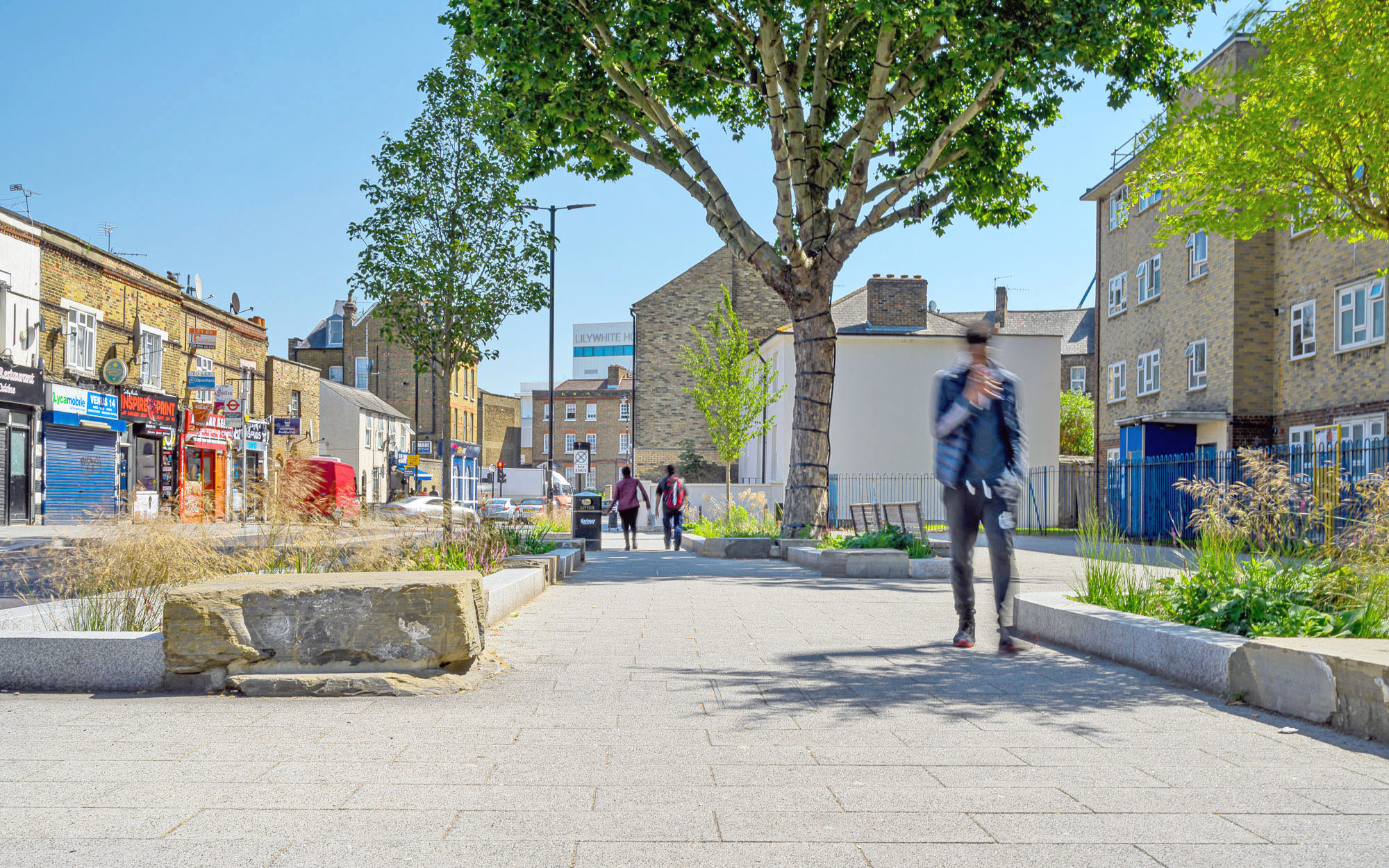
Mechanised Installation
Whether conventional or permeable, modular concrete block paving is particularly suited to well-established mechanised installation techniques. In essence, a hydraulically operated clamping system is used to lift a ‘cluster’ of concrete paving blocks – generally around 1 square metre in area and already in the required laying pattern. Clamps can be fitted to a variety of site equipment or form an integral part of dedicated machines designed for good site manoeuvrability. While the machine does all the work, there is sometimes an operative guiding the cluster into place, in addition to the machine operator.
All kinds of block shapes and styles, including standard rectangular, can be machine laid in various patterns including herringbone which some manufacturers offer ready for machine laying. The speed of laying depends very much on site organisation, travel distances, machine types and other factors. But 1,500 square metres or more per day should be achievable – contrasting with no more than 50 square metres per person for manual laying. Productivity is comparable with asphalting operations and the ability to deploy a block laying machine and crew at short notice to meet ‘just in time’ demands on sizeable projects is a major advantage.
But there are benefits in using the technology on modest sized projects, as well as larger schemes. Faster installation means earlier completion and less operational downtime of the paved area – not forgetting that block paving can be used immediately after completion without curing times. Machine installation also makes it easier to achieve consistent accuracy and uniform joint widths as it is less tiring for operatives. To maximise the efficiencies of mechanical laying, installation contractors adopt a similar approach with all the site processes, such as mechanising other operations including laying and screeding the laying course, and delivering blocks close to the laying face.
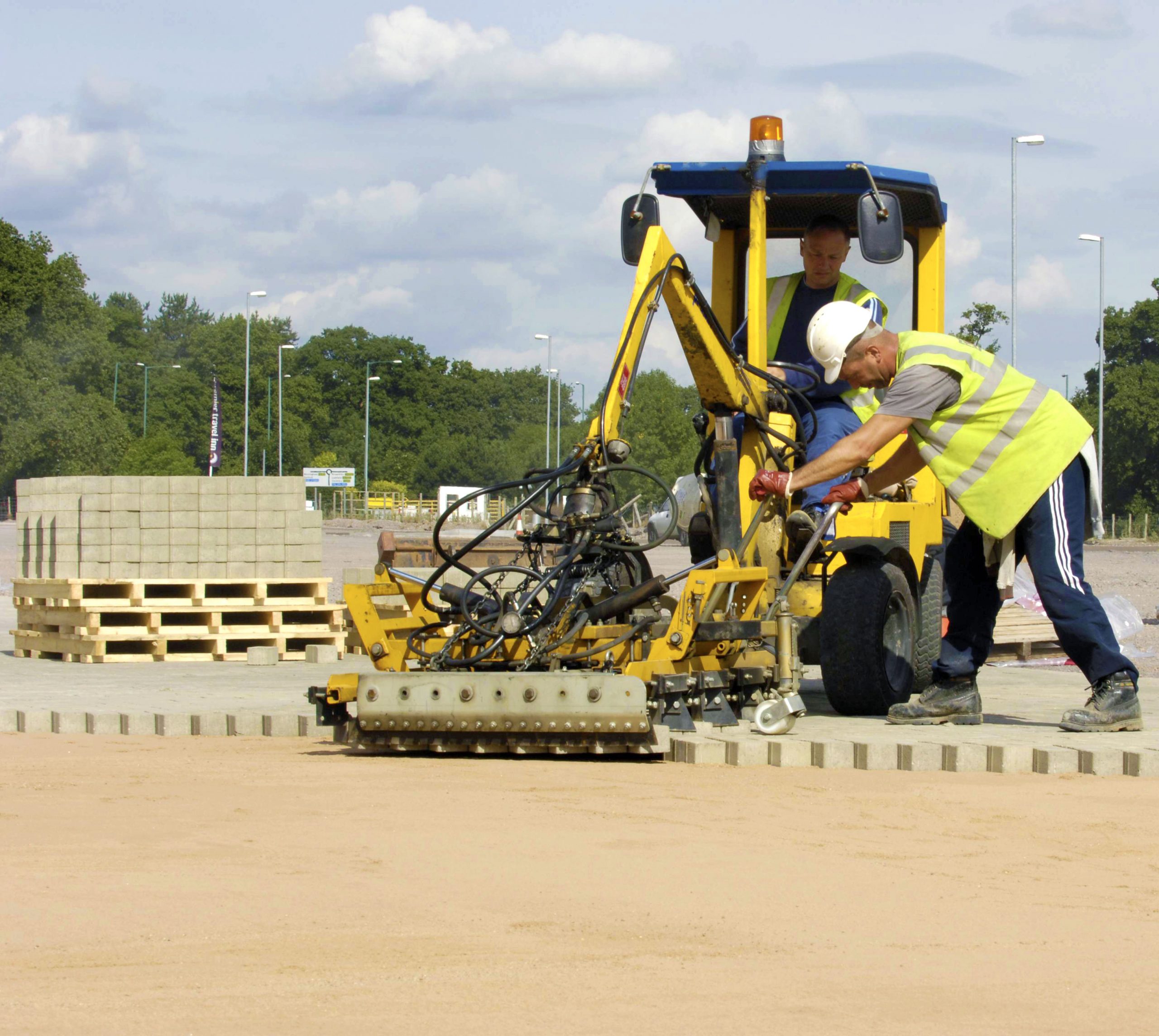
Safety and Efficiency
The same concept can be applied to other precast concrete paving products to improve safety as well as efficiency. Concrete kerbs have been in use for around 70 years and concrete flag paving for even longer. Regulations have been in place for some time to protect workers from risks associated with musculoskeletal and upper limb disorders resulting from manual lifting and installation of these products.
Elimination of manual lifting should be considered at the design stage so that kerbs and flags are always handled and laid mechanically using vacuum lifting gear, mechanical grabs or similar devices. Where manual handling is unavoidable, workers should be trained in good handling techniques. The use of lighter weight kerbs or devices that allow two people to share the lift will reduce the risk of injury. Using smaller and lighter kerbs or flags, or substituting flags with block paving will further reduce the risks from any residual manual handling.
Another area where safety measures offer other cost and efficiency benefits is the elimination of cutting concrete paving products. Silica is a natural component found in many construction products: crystalline silica is found in sand, sandstone, granite and concrete. Health hazards can result from breathing in the fine dust of crystalline silica. But this risk can be eliminated when installing concrete paving blocks, flags and kerbs – either by removing the need to cut concrete products or by utilising safer cutting practices and equipment.
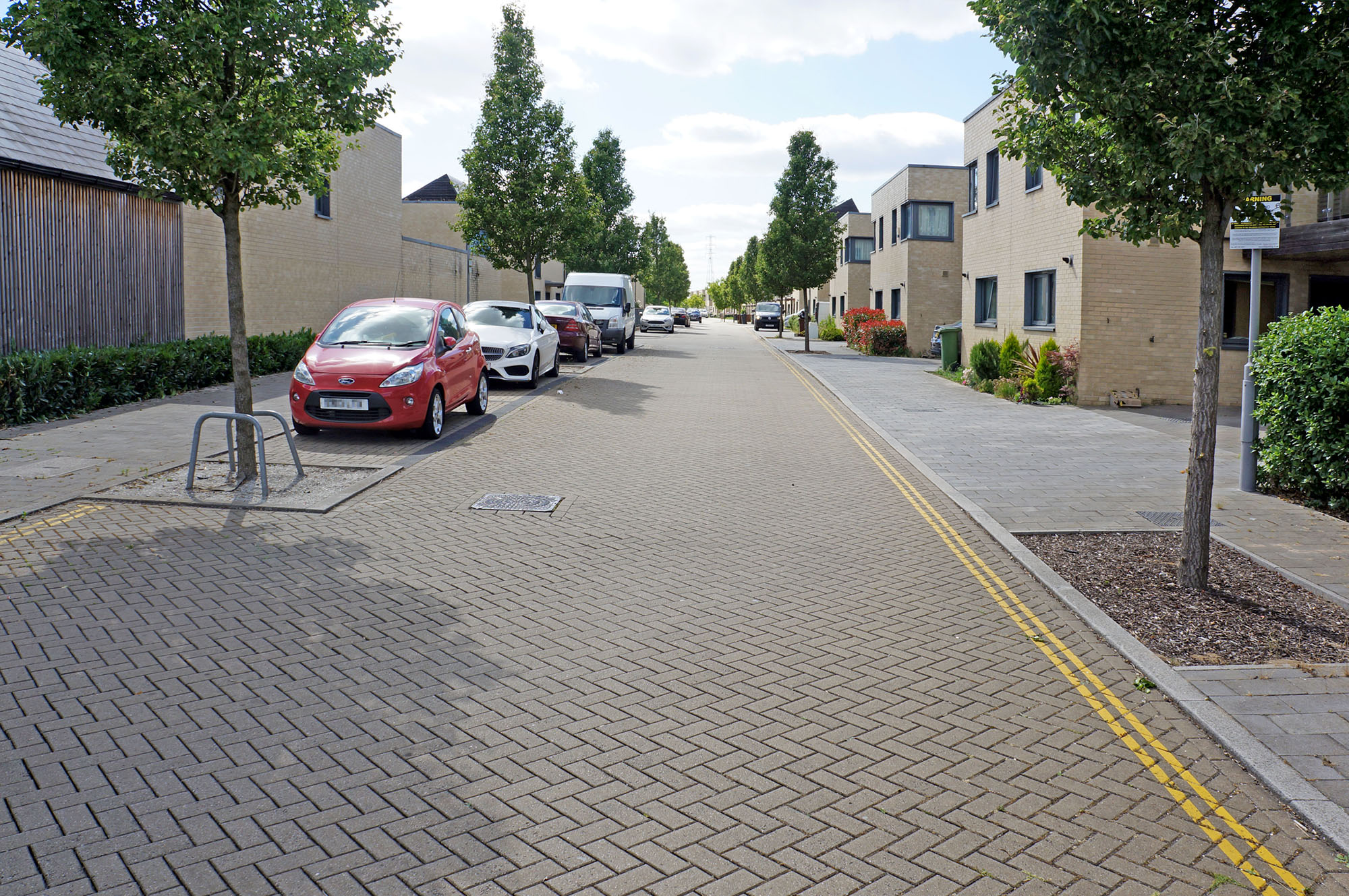
Modular Nature
It is important to remember that the key to attractive, durable, cost-effective precast concrete paving is to optimise its modular nature, by dimensioning areas to minimise cutting and combining compatible products to avoid it. There are numerous techniques and special products readily available to help with this, as well as different styles of precast concrete kerbs, channels and other components. Consideration of all the product alternatives and sizes available at the design stage, and careful setting out can generate real efficiencies and eliminate the need for cutting.
As with any construction operation, the devil is in the detail – with edges, insertions, level changes and junctions within paving, which should not just be left to on-site operatives but resolved off-site within the design.

